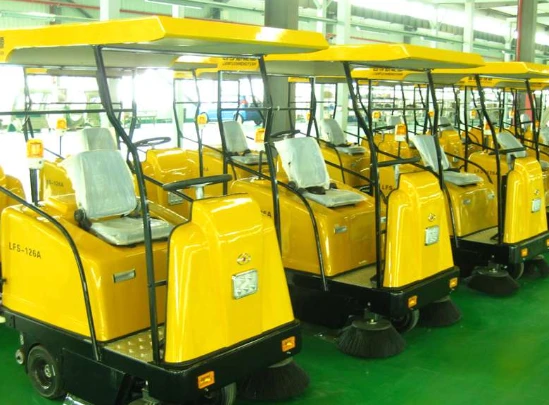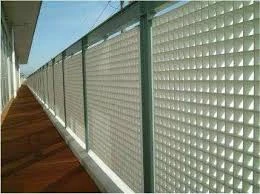
-
 Afrikaans
Afrikaans -
 Albanian
Albanian -
 Amharic
Amharic -
 Arabic
Arabic -
 Armenian
Armenian -
 Azerbaijani
Azerbaijani -
 Basque
Basque -
 Belarusian
Belarusian -
 Bengali
Bengali -
 Bosnian
Bosnian -
 Bulgarian
Bulgarian -
 Catalan
Catalan -
 Cebuano
Cebuano -
 China
China -
 China (Taiwan)
China (Taiwan) -
 Corsican
Corsican -
 Croatian
Croatian -
 Czech
Czech -
 Danish
Danish -
 Dutch
Dutch -
 English
English -
 Esperanto
Esperanto -
 Estonian
Estonian -
 Finnish
Finnish -
 French
French -
 Frisian
Frisian -
 Galician
Galician -
 Georgian
Georgian -
 German
German -
 Greek
Greek -
 Gujarati
Gujarati -
 Haitian Creole
Haitian Creole -
 hausa
hausa -
 hawaiian
hawaiian -
 Hebrew
Hebrew -
 Hindi
Hindi -
 Miao
Miao -
 Hungarian
Hungarian -
 Icelandic
Icelandic -
 igbo
igbo -
 Indonesian
Indonesian -
 irish
irish -
 Italian
Italian -
 Japanese
Japanese -
 Javanese
Javanese -
 Kannada
Kannada -
 kazakh
kazakh -
 Khmer
Khmer -
 Rwandese
Rwandese -
 Korean
Korean -
 Kurdish
Kurdish -
 Kyrgyz
Kyrgyz -
 Lao
Lao -
 Latin
Latin -
 Latvian
Latvian -
 Lithuanian
Lithuanian -
 Luxembourgish
Luxembourgish -
 Macedonian
Macedonian -
 Malgashi
Malgashi -
 Malay
Malay -
 Malayalam
Malayalam -
 Maltese
Maltese -
 Maori
Maori -
 Marathi
Marathi -
 Mongolian
Mongolian -
 Myanmar
Myanmar -
 Nepali
Nepali -
 Norwegian
Norwegian -
 Norwegian
Norwegian -
 Occitan
Occitan -
 Pashto
Pashto -
 Persian
Persian -
 Polish
Polish -
 Portuguese
Portuguese -
 Punjabi
Punjabi -
 Romanian
Romanian -
 Russian
Russian -
 Samoan
Samoan -
 Scottish Gaelic
Scottish Gaelic -
 Serbian
Serbian -
 Sesotho
Sesotho -
 Shona
Shona -
 Sindhi
Sindhi -
 Sinhala
Sinhala -
 Slovak
Slovak -
 Slovenian
Slovenian -
 Somali
Somali -
 Spanish
Spanish -
 Sundanese
Sundanese -
 Swahili
Swahili -
 Swedish
Swedish -
 Tagalog
Tagalog -
 Tajik
Tajik -
 Tamil
Tamil -
 Tatar
Tatar -
 Telugu
Telugu -
 Thai
Thai -
 Turkish
Turkish -
 Turkmen
Turkmen -
 Ukrainian
Ukrainian -
 Urdu
Urdu -
 Uighur
Uighur -
 Uzbek
Uzbek -
 Vietnamese
Vietnamese -
 Welsh
Welsh -
 Bantu
Bantu -
 Yiddish
Yiddish -
 Yoruba
Yoruba -
 Zulu
Zulu
Pultruded Fiberglass Grating Durable, Lightweight & Corrosion-Resistant
- Overview of Fiberglass Grating Solutions
- Technical Superiority in Manufacturing
- Performance Comparison: Pultruded vs. Molded Grating
- Market Leaders and Product Benchmarking
- Custom Engineering for Specialized Needs
- Industry-Specific Deployment Scenarios
- Future-Proofing Infrastructure with Advanced Composites

(pultruded fiberglass grating)
Pultruded Fiberglass Grating: Redefining Structural Efficiency
Modern industrial applications demand materials combining 94% corrosion resistance with 40% weight reduction versus steel alternatives. Pultruded fiberglass grating achieves tensile strengths exceeding 30,000 psi while maintaining UL 94V-0 fire ratings, making it indispensable across chemical processing and offshore platforms.
Technical Superiority in Manufacturing
The continuous pultrusion process enables precise fiber alignment, yielding gratings with:
- 0.72 g/cm³ density (vs. 7.85 g/cm³ for steel)
- 1.5% water absorption rates
- +180°F continuous service temperature
Molded variants compensate with complex shape capabilities, though sacrifice 18% longitudinal strength compared to pultruded profiles.
Performance Comparison: Pultruded vs. Molded Grating
| Parameter | Pultruded | Molded |
|---|---|---|
| Load Capacity (psf) | 350 | 250 |
| Slip Resistance | ASTM E303-93 (>0.85) | ASTM D4102 (>0.75) |
| Thermal Expansion | 3.5×10⁻⁶/°F | 4.8×10⁻⁶/°F |
Market Leaders and Product Benchmarking
Top manufacturers exhibit distinct specialization:
| Vendor | Core Product | MOQ | Lead Time |
|---|---|---|---|
| Fibergrate | Pultruded | 50 m² | 2-3 weeks |
| Strongwell | Molded | 100 m² | 4-5 weeks |
Custom Engineering for Specialized Needs
Adaptive manufacturing protocols enable:
- Custom mesh patterns (38mm/19mm/15mm)
- Resin formulations (vinyl ester/isophthalic)
- Surface treatments (grit-coated/non-conductive)
Industry-Specific Deployment Scenarios
Case Study: Petrochemical refinery replaced carbon steel walkways with pultruded grating, achieving:
- 83% reduction in maintenance costs
- 15-year lifespan extension
- 30% faster installation cycles
Future-Proofing Infrastructure with Fiberglass Grating & Annex
As global demand for non-metallic solutions grows at 6.8% CAGR, fiberglass grating annex components (clips/ramps/curbs) complete corrosion-resistant systems. Recent UL certification updates (2023 standards) now mandate 25% increased impact resistance for industrial safety compliance.

(pultruded fiberglass grating)
FAQS on pultruded fiberglass grating
Q: What are the key differences between pultruded fiberglass grating and molded fiberglass grating?
A: Pultruded fiberglass grating is manufactured through a continuous process for high strength and corrosion resistance, ideal for heavy loads. Molded grating has a bidirectional strength design and is lighter, suited for platforms or walkways. Both are non-conductive and resistant to chemicals.
Q: Why choose pultruded fiberglass grating over steel in industrial settings?
A: Pultruded fiberglass grating is lightweight, corrosion-resistant, and requires no maintenance, unlike steel. It provides excellent slip resistance and electrical insulation. These properties make it ideal for harsh environments like chemical plants.
Q: What applications are suitable for Fiberglass Grating & Annex products?
A: Fiberglass Grating & Annex products are used in platforms, stair treads, and drainage covers. They’re common in wastewater treatment plants, offshore platforms, and food processing facilities. Their modular design allows easy customization.
Q: How is pultruded fiberglass grating installed?
A: Pultruded grating is installed using clips, bolts, or adhesives, depending on the structure. Panels are cut to size with standard tools and secured to support frames. Its lightweight nature simplifies handling and reduces installation time.
Q: Can molded fiberglass grating withstand extreme temperatures?
A: Yes, molded fiberglass grating performs well in temperatures from -40°F to 180°F (-40°C to 82°C). It resists thermal expansion and retains structural integrity. Ideal for environments with fluctuating heat or cold exposure.
Latest news
-
FRP Shell Solutions Durable Fiberglass & GRP Shells for All NeedsNewsMay.09,2025
-
Durable Fiberglass Vessels & Tanks Corrosion-Resistant SolutionsNewsMay.09,2025
-
Efficient Fiberglass Clarifier Systems for Water & Solid TreatmentNewsMay.09,2025
-
Pultruded Fiberglass Grating Durable, Lightweight & Corrosion-ResistantNewsMay.09,2025
-
GRP/FRP Transport Tanks Durable Corrosion-Resistant SolutionsNewsMay.09,2025
-
FRP Hoods Lightweight, Durable & Corrosion-Resistant SolutionsNewsMay.08,2025









